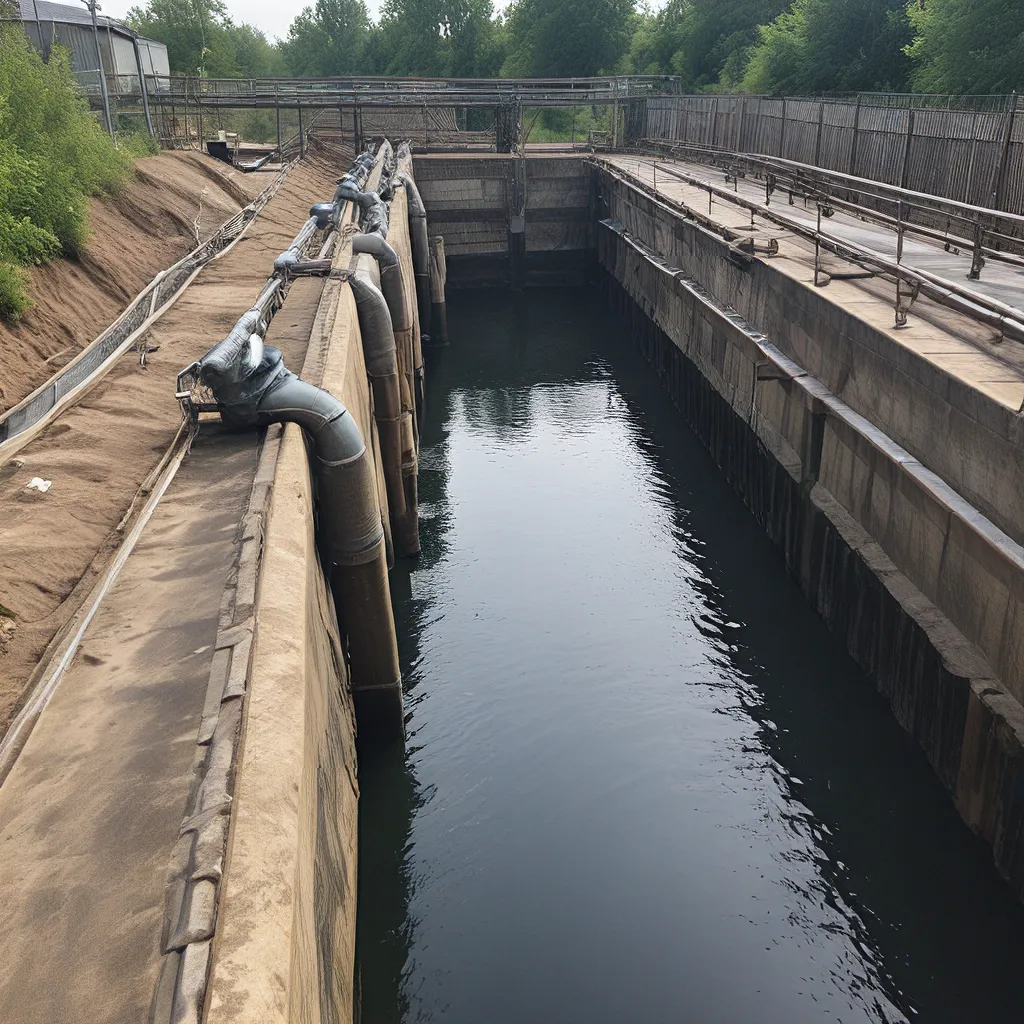
As someone who’s been in the wastewater treatment industry for over a decade, I’ve seen my fair share of challenges when it comes to keeping our water clean and safe. But let me tell you, the game is changing, and we’re starting to see some real breakthroughs that are making this process more efficient, cost-effective, and environmentally friendly than ever before.
Tackling the Energy Drain
One of the biggest issues we’ve faced in the past is the sheer amount of energy required to power our wastewater treatment systems. In fact, did you know that the filtration process alone consumes 3 to 4 percent of the entire nation’s electrical power every year? Talk about a serious energy drain!
But you know what they say – where there’s a will, there’s a way. And that’s exactly what we’re seeing with the emergence of greener treatment technologies. Take the example of Yorkshire Water – they recently had to build a new facility due to erosion, and they decided to use that as an opportunity to go green.
They invested in a technology called AeroFac, which uses a combination of gentle biochemical processes and exposure to the sun’s UV rays to treat the water. Not only is it better for the environment, but it’s also much cheaper to run the plant now. Yorkshire Water is reaping the benefits of a low carbon footprint and dramatic energy savings through the use of renewable energy.
And that’s just the tip of the iceberg. At Alpha Wastewater, we’ve been working with cutting-edge solutions like membrane bioreactors and advanced oxidation processes to reduce the energy demands of our systems. It’s all about finding that sweet spot between efficiency and sustainability.
Tackling Tough Contaminants
Another major challenge we’ve been facing is the emergence of exceptionally robust and complex contaminants in our wastewater. One prime example is a class of human-made chemicals known as PFAS (per- and polyfluoroalkyl substances). These “forever chemicals” are found in everything from clothing to cookware to food packaging, and they’re notoriously difficult to break down and destroy.
But you know what they say – where there’s a will, there’s a way. And that’s exactly what the team at Claros Technologies has been working on. They’ve developed a proprietary process that can completely eliminate PFAS by breaking them down into their constituent elements.
This is a game-changer, especially when you consider the fact that there have been over 6,400 PFAS-related lawsuits filed since 2005, the majority of which involve allegations of water contamination. The US Environmental Protection Agency has even unveiled a strategic roadmap to safeguard communities from PFAS contamination and hold polluters accountable.
So if you’re an organization that produces PFAS in your wastewater, let me give you a bit of advice – you’d better introduce PFAS destruction into your production process, and fast. Trust me, you do not want to be on the wrong side of these new regulations and potential lawsuits.
Minimizing Environmental Impact
But it’s not just about the contaminants themselves – we also need to be mindful of the environmental impact of the wastewater treatment process. After all, the organic matter that gets removed from the wastewater has to go somewhere, and if we’re not careful, those toxins could end up right back in our local waterways.
That’s why it’s so important to invest in eco-friendly treatment systems that use green technology. These systems treat the wastewater with processes that are completely free of environmental pollutants, ensuring that the water discharged back into the environment is as clean and safe as possible.
And let me tell you, this is going to become even more critical in the years to come as new environmental regulations emerge. Wastewater treatment is no longer just about making the water non-toxic – it’s about making it as environmentally safe as possible.
Staffing Challenges
Of course, no discussion of wastewater treatment challenges would be complete without addressing the staffing issues that many organizations face. It’s a complicated process that requires highly trained managers and workers, and finding qualified candidates can be a real challenge.
But you know what they say – work smarter, not harder. That’s why we’re seeing more and more organizations explore the automation of certain recurring processes. Not only does this increase efficiency, but it also significantly reduces labor costs by requiring fewer operators and less maintenance over time.
And let me tell you, this is a trend that’s only going to continue. As the wastewater treatment systems of the past become an operational and financial liability for industrial organizations, they’re going to have to embrace these new innovative solutions if they want to stay competitive and compliant.
Embracing the Future of Wastewater Filtration
At the end of the day, the challenges we face in the world of wastewater treatment are real, but they’re not insurmountable. With the right combination of strategic changes and innovative resources, we can increase the efficiency and safety of our wastewater treatment systems all while reducing costs.
Sure, system upgrades come with additional costs, but the long-term rewards are certainly worth the price – increased efficiency, reduced operational expenses, and consistent regulatory compliance. And let me tell you, that’s a win-win-win in my book.
So, if you’re an organization that’s struggling with the hurdles of wastewater filtration, I encourage you to embrace the future. Explore the latest green technologies, invest in PFAS destruction solutions, and look into ways to automate your processes. Trust me, your bottom line and the health of our planet will thank you.
And who knows, maybe one day we’ll look back on these challenges and laugh. After all, where there’s a will, there’s a way – and in the world of wastewater treatment, that’s a mantra we live by.